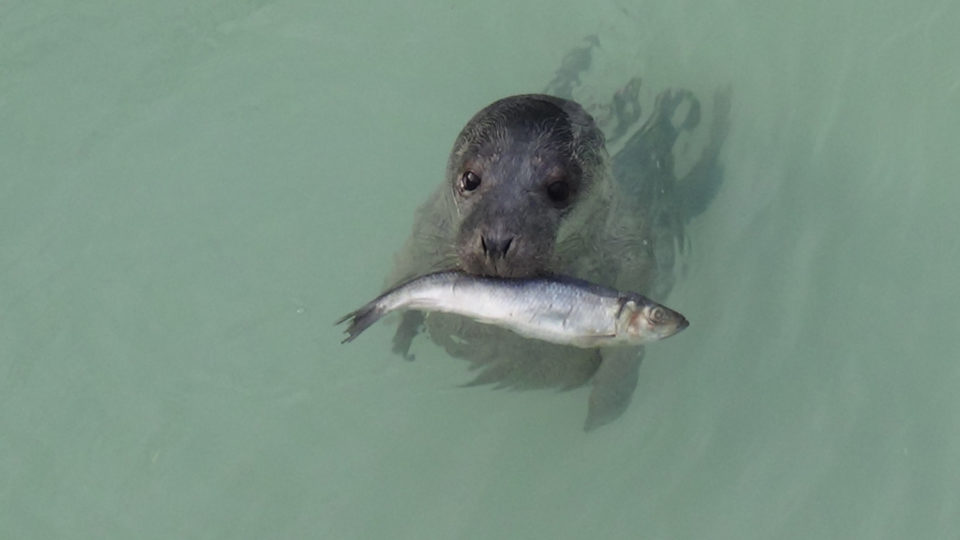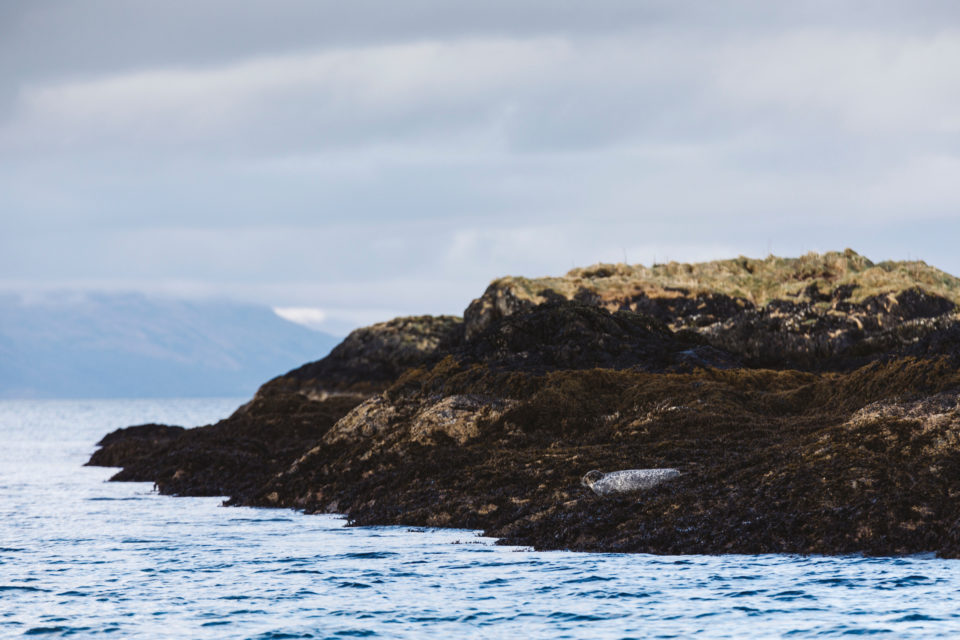Increasing seal populations, pending export regulations challenge Scotland’s salmon sector

A U.S. import ban on salmon from fish farms that kill marine mammals, planned for 2022, is helping to focus minds in the Scottish salmon industry. The United States is the largest market for Scottish salmon, with annual sales in the region of around £200 million ($261 million). Loss of access would have serious consequence for exporters.
The new rule, which came into effect in 2016, included a five-year interim exemption period from 1 January 2017, to enable supplying countries to implement a regulatory program that “prohibits the intentional killing or serious injury of marine mammals in all fisheries.” At the time of publication, a NOAA spokesperson said that the rule “demonstrates progressive global conservation and expands international collaboration for best stewardship.”
Julie Hesketh-Laird, head of the Scottish Salmon Producers’ Organisation (SSPO), told the Advocate that the organization and the wider industry were “acutely aware of their responsibility for the welfare of farmed fish and of marine mammals which live alongside farms.”
“While the salmon farming sector is permitted under Scottish law to shoot seals, its ambition is to reduce the number to zero. However, to achieve this, salmon farmers will need help to ensure that alternative deterrence techniques solve the problem against an increasing Scottish seal population,” said Hesketh-Laird.
Seals have always been a predatory issue for salmon farmers in Scotland, and their population has risen dramatically in recent years. They are highly efficient predators, eating between 3 and 7 kg of food per day, depending on the species. A single seal attack can cause the death of hundreds of salmon, by taking a single bite out of each fish then leaving them to die. Those not attacked suffer stress that can lead to further deaths.
Culling seals is a measure of last resort taken by farmers to protect their salmon, according to Ralph Bickerdike, head of fish health at Scottish Sea Farms, not least because it sends out the wrong message to consumers, who are increasingly vocal about the way in which their food is produced.
The practice also gives environmental NGOs another opportunity to criticize the industry, and was highlighted as an issue during the recent Parliamentary Inquiry into salmon farming.
https://www.aquaculturealliance.org/advocate/report-calls-changes-scottish-salmon-sector/
When shooting becomes necessary, generally for persistent offenders, farmers are advised to recover the carcass before it ends up rotting on a beach. Failure to do this led to five shot seals being found by tourists in Shetland in 2018, and environmental campaigners were quick to weigh into the furor.
On this occasion, following an investigation by Marine Scotland, Cooke Aquaculture was fined £2,000 for failing to report the killing of seals to the licensing authority within 48 hours.
“We don’t want to shoot seals. We need to be seen to be working with the natural environment, and prove that salmon farms and seals can co-exist,” said Cooke farm manager David Brown.
Pete and Jan Bevington of Hillswick Wildlife Sanctuary, which looks after injured and abandoned marine mammals in Shetland, have been campaigning for years for a ban. They hope that the precedent set by prosecution and fine sends a strong message to the wider salmon industry.
“We are very happy that salmon farmers are finally investing in effective anti-predator nets. We wish it hadn’t taken them so long, but we hope that Shetland can now set an example to the industry in the rest of the world,” he told the Advocate.
“Scottish salmon is sold on the basis that it is grown in a pristine environment. Fish farmers now need to live up to that marketing image and show the environment and other marine life the respect it is due. And in the digital age, where everyone has a phone camera, anyone not playing by the rules will be found out, which is bad for business and for the image of Shetland as a haven for wildlife.”

His sentiments are mirrored by wildlife presenter Lizzie Daly, who travelled to Shetland to make a film about the shooting of the five seals.
“It’s important for the industry to address that they are in the seals’ environment; they are natural predators and the industry should be proud to share waters with one of the UK’s most iconic marine mammals. I would also like to see a ban on the shooting of seals in the UK,” said Daly.
The latest figures from Marine Scotland show that in the year ending January 2018, a total of 72 seals (53 grey and 19 common seals) were shot by salmon farmers in Scotland. The government issued 47 licences covering 175 individual fish farms, which require farmers to self-report a cull.
The SSPO’s Code of Practice for salmon farms states that it is “good practice to use appropriate and site-specific methods to deter seals observed in the vicinity of their fish by using non-lethal measures.”
Such measures include the use of heavily tensioned net pens, fine mesh seal blinds at the bottom of the pens to prevent seals seeing any dead fish in the bottom of the pen, and deployment of acoustic deterrent devices which emit a high-pitched noise to scare seals away from the pens. Other novel deterrents are also in development, including an electric fish that emits a shock when bitten.
Seal Pro, a new type of netting, holds the most promise and has proved to be highly successful in trials. For the first time in the industry’s 40-year history, salmon producers in Shetland are confident that no seals will be shot there in 2019.
Scottish Sea Farms have already installed Seal Pro netting at 21 of its 45 salmon farms in Scotland at a cost of £4.2 million ($5.5 million), with nine more farms planned for protection in 2019 and 2020. Cook Aquaculture and Grieg Seafood have made similar investments in the anti-predator nets, in a bid to get on top of the situation.
“With traditional nylon nets, a hungry seal will push its snout against the soft twine in the hope that salmon will swim close enough for it to grab. In contrast, Seal Pro netting has an altogether tougher, more rigid surface which helps deter seals and in turn, improve fish welfare,” said Bickerdike.
Follow the Advocate on Twitter @GAA_Advocate
Now that you've finished reading the article ...
… we hope you’ll consider supporting our mission to document the evolution of the global aquaculture industry and share our vast network of contributors’ expansive knowledge every week.
By becoming a Global Seafood Alliance member, you’re ensuring that all of the pre-competitive work we do through member benefits, resources and events can continue. Individual membership costs just $50 a year. GSA individual and corporate members receive complimentary access to a series of GOAL virtual events beginning in April. Join now.
Not a GSA member? Join us.
Author
-
Nicki Holmyard
Nicki Holmyard has written about the seafood industry for longer than she cares to remember! A committed pescetarian, she is also a partner in the UK’s first fully offshore rope-grown mussel farm.
Tagged With
Related Posts

Health & Welfare
Advice for managing predatory birds, part 1
Predatory birds can cause major losses for tilapia farms. As some bird species are protected by law, fish farmers must use non-lethal control techniques.

Health & Welfare
Protecting fish in shark-infested waters
Sharks are predators to warmwater aquaculture that are not stopped by traditional cage nets when they seek the fish contained inside.

Intelligence
Despite Seafood Watch downgrade, few market changes for geoducks
A rating change for Pacific geoducks farmed in Washington state and British Columbia surprised and confused many in the field, since it’s a segment of the industry generally considered sensitive to sustainability issues.

Responsibility
Can ranching ‘zombie urchins’ boost uni, save kelp forests?
With Norwegian knowledge and a partnership with Mitsubishi, Urchinomics aims to turn worthless empty urchins into valuable seafood while restoring kelp forests and creating jobs.


